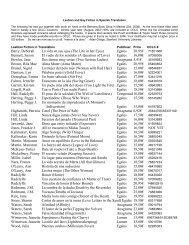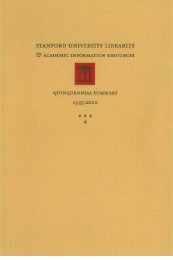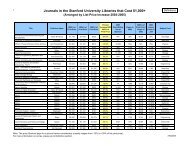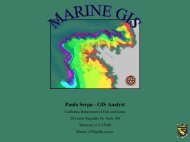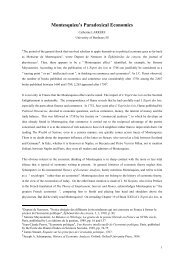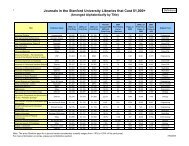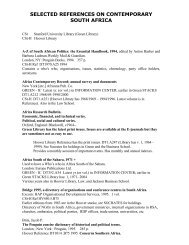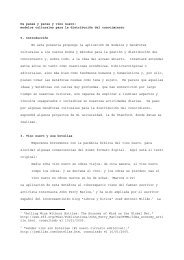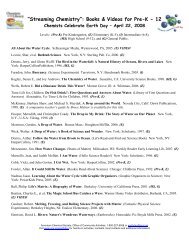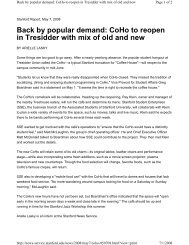The Abbé de Saint-Pierre and the Emergence of the 'Quantifying ...
The Abbé de Saint-Pierre and the Emergence of the 'Quantifying ...
The Abbé de Saint-Pierre and the Emergence of the 'Quantifying ...
You also want an ePaper? Increase the reach of your titles
YUMPU automatically turns print PDFs into web optimized ePapers that Google loves.
Abbé <strong>Saint</strong>-<strong>Pierre</strong> <strong>and</strong> <strong>the</strong> “Quantifying Spirit” 12<br />
public tasks, performing <strong>the</strong>m with great distinction throughout his forty-year tenure as aca<strong>de</strong>my<br />
secretary. But he was also a producer <strong>of</strong> original scientific work even if <strong>the</strong>se efforts pale in<br />
comparison to his work as a writer <strong>of</strong> plays, poems, <strong>and</strong> literary works or his efforts as <strong>the</strong> public<br />
spokesperson for <strong>the</strong> royal aca<strong>de</strong>my. Interestingly, <strong>the</strong> precise scientific topic that attracted his<br />
focused intellectual attention was <strong>the</strong> new analytical ma<strong>the</strong>matics. Fontenelle spent his lifetime<br />
studying <strong>the</strong> new calculus, <strong>and</strong> his work culminated in a 1727 treatise entitled Eléments <strong>de</strong> la<br />
géometrie <strong>de</strong> l’infini. He too had close ties to <strong>the</strong> “MalebrancheCircle,” writing <strong>the</strong> “Preface” to<br />
l’Hôpital’s pioneering 1696 treatise on <strong>the</strong> infinitesimal calculus L’Analyse <strong>de</strong>s infinimens petits.<br />
In his role as historian <strong>of</strong> <strong>the</strong> aca<strong>de</strong>my he also used his pen to <strong>of</strong>fer a <strong>de</strong>tailed, year by year<br />
account <strong>of</strong> <strong>the</strong>ir work. He also used his tremendous rhetorical gifts to advocate for advanced<br />
ma<strong>the</strong>matics before <strong>the</strong> public at large. <strong>Saint</strong>-<strong>Pierre</strong> was again at close h<strong>and</strong> during <strong>the</strong>se <strong>and</strong> all<br />
<strong>of</strong> Fontenelle’s o<strong>the</strong>r intellectual en<strong>de</strong>avors, <strong>and</strong> <strong>the</strong> influence on his own thought <strong>and</strong> work was<br />
unmistakable. 30<br />
In <strong>the</strong> wake <strong>of</strong> <strong>the</strong> new ma<strong>the</strong>matical interests <strong>of</strong> his Norman comra<strong>de</strong>s, however, <strong>Saint</strong>-<br />
<strong>Pierre</strong> chose nei<strong>the</strong>r to pursue a career in ma<strong>the</strong>matics like Varignon, nor even a career which<br />
ma<strong>de</strong> ma<strong>the</strong>matical work a significant part <strong>of</strong> a diverse set <strong>of</strong> intellectual practices like<br />
Fontenelle. Instead, he charted his own course while never<strong>the</strong>less carrying <strong>the</strong> legacy <strong>of</strong> his<br />
ma<strong>the</strong>matical encounters with him. When Varignon’s appointment earned him lodging at <strong>the</strong><br />
Collège Mazarin in 1687, <strong>the</strong> “cradle <strong>of</strong> <strong>the</strong> eighteenth-century” as one scholar has called <strong>the</strong><br />
cabane in <strong>the</strong> Faubourg St. Jacques was ab<strong>and</strong>oned. 31 Vertot went his own way, becoming a<br />
leading scholar <strong>of</strong> antiquities <strong>and</strong> a member <strong>of</strong> Académie royale <strong>de</strong>s Inscription et Belles-lettres,<br />
while <strong>Saint</strong>-<strong>Pierre</strong> looked elsewhere for opportunities.



